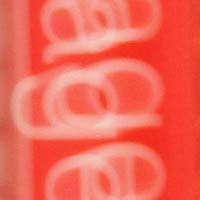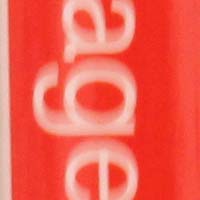Canon EOS 50D Review
Review Date: October 2nd 2008
Author: Mark Goldstein
Leave a comment about this Review
|
Image Quality
All of the sample images in this Review were taken using the 15 megapixel Fine JPEG setting, which gives an average image size of between 4-6Mb.
The Canon EOS 50D produced images of excellent quality during the review period. This camera produces noise-free images at ISO 100 all the way up to ISO 1600, with only the fastest setting of 12800 really being unusable. Image stabilisation via the kit lens is a feature that helps the EOS 50D keep up with its competitors, and one that works very well when hand-holding the camera in low-light conditions or when using the telephoto end of the zoom range. The Canon EOS 50D dealt very well with chromatic aberrations, with limited purple and cyan fringing effects appearing only at the edges of the photo in high contrast situations. The 15 megapixel images were a little soft straight out of the camera at the default sharpening setting and ideally require some further sharpening in an application like Adobe Photoshop, or you can change the in-camera setting. The built-in flash worked well indoors, with no red-eye and good overall exposure. The night photograph was very good, with the maximum shutter speed of 30 seconds and Bulb mode allowing you to capture enough light in all situations.
Noise
There are 8 ISO settings available on the Canon EOS 50D which you can select at any time (you need to to enable the ISO 6400 and 12800 modes via the "ISO expansion" custom function option). There is no discernible noise between ISO 100-800, and ISO 1600 also looks good. There is some noise at 3200 though, but it's still very well controlled, and even ISO 6400 is usable. The fastest setting of ISO 12800 is only recommended for emergency use. Here are some 100% crops which show the noise levels for each ISO setting:
ISO 100 (100% Crop) |
ISO 200 (100% Crop) |
 |
 |
ISO 400 (100% Crop) |
ISO 800 (100% Crop) |
 |
 |
ISO 1600 (100% Crop) |
ISO 3200 (100% Crop) |
 |
 |
ISO 6400 (100% Crop) |
ISO 12800 (100% Crop) |
 |
 |
File Quality
The Canon EOS 50D has 2 different JPEG file quality settings available, with Fine being the highest quality JPEG option. Here are some 100% crops which show the quality of the various options, with the file size shown in brackets.
15M Fine (4.87Mb) (100% Crop) |
15M Normal (2.33Mb) (100% Crop) |
 |
 |
15M RAW (19.4Mb) (100% Crop) |
|
 |
|
Sharpening
Here are two 100% crops which have been Saved as Web - Quality 50 in Photoshop. The right-hand image has had some sharpening applied in Photoshop. The out-of-the camera images at the default setting are a little soft and benefit from some further sharpening in a program like Adobe Photoshop. Alternatively you can change the in-camera sharpening level if you don't like the default results.
Original
(100% Crop) |
Sharpened (100% Crop) |
 |
 |
 |
 |
Chromatic Aberrations
The Canon EOS 50D's EFS 18-55mm f/3.5-5.6 IS kit lens handled chromatic aberrations very well during the review, with some limited purple and cyan fringing present around the edges of the frame in particularly high-contrast situations. Here is a 100% crop which shows the typical chromatic aberrations that you can expect:
Chromatic Aberrations 1 (100% Crop) |
 |
Flash
The flash settings on the Canon EOS 50D are Auto, Manual Flash On/Off, and Red-Eye Reduction. These shots of a white coloured wall were taken at a distance of 1.5m.
Flash Off - Wide Angle (29mm) |
Auto Flash - Wide Angle (29mm) |
 |
 |
Flash Off - Telephoto (88mm) |
Auto Flash - Telephoto (88mm) |
 |
 |
And here are some portrait shots. As you can see, neither the Flash On setting or the Flash On + Red-eye option caused any amount of red-eye.
Auto |
Auto (100% Crop) |
 |
 |
Red-eye reduction |
Red-eye reduction (100% Crop) |
 |
 |
Night Shot
The Canon EOS 50D's maximum shutter speed is 30 seconds and there's a Bulb mode for even longer exposures, which is excellent news if you're seriously interested in night photography. The shot below was taken using a shutter speed of 20 seconds, aperture of f/8 at ISO 100. I've included a 100% crop of the image to show what the quality is like.
Night Shot |
Night Shot (100% Crop) |
 |
 |
Image Stabilisation
The Canon EOS 50D's EFS 18-55mm f/3.5-5.6 IS kit lens offers image stabilisation, which allows you to take sharp photos at slower shutter speeds than other digital cameras. To test this, I took 2 handheld shots of the same subject with the same settings. The first shot was taken with Image Stabilisation turned off, the second with it turned on. Here is a 100% crop of the image to show the results. As you can see, with Image Stabilisation turned on, the images are much sharper than with anti-shake turned off. This feature really does seem to make a difference and could mean capturing a successful, sharp shot or missing the opportunity altogether.
| Shutter Speed / Focal Length |
Image Stabilisation Off (100% Crop) |
Image Stabilisation On (100% Crop) |
| 1/13th sec / 29mm |  |
 |
| 1/13th sec / 88mm |  |
 |
|
![]() PhotographyBLOG
is a member of the DIWA
organisation. Our test results for the Canon EOS 50D have been submitted to DIWA
for comparison with test results for different samples of
the same camera model supplied by other DIWA
member sites.
PhotographyBLOG
is a member of the DIWA
organisation. Our test results for the Canon EOS 50D have been submitted to DIWA
for comparison with test results for different samples of
the same camera model supplied by other DIWA
member sites.
